
Friedrich Christian Anton Lang, better known as Fritz Lang, was an Austrian film director, screenwriter, and producer who worked in Germany and later the United States. One of the best-known émigrés from Germany's school of Expressionism, he was dubbed the "Master of Darkness" by the British Film Institute. He has been cited as one of the most influential filmmakers of all time.

Martin Ludwig Bormann was a German Nazi Party official and head of the Nazi Party Chancellery. He gained immense power by using his position as Adolf Hitler's private secretary to control the flow of information and access to Hitler. He used his position to create an extensive bureaucracy and involve himself as much as possible in the decision making.
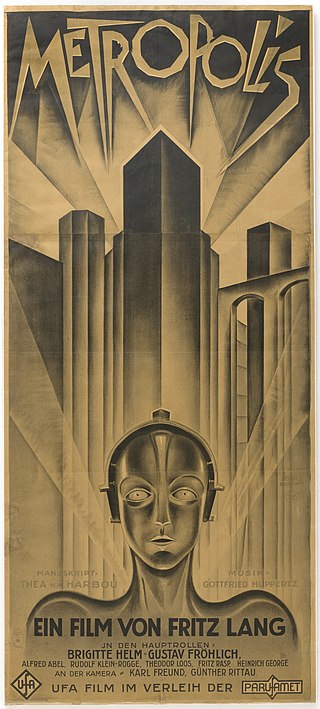
Metropolis is a 1927 German expressionist science-fiction silent film directed by Fritz Lang and written by Thea von Harbou in collaboration with Lang from von Harbou's 1925 novel of the same name. It stars Gustav Fröhlich, Alfred Abel, Rudolf Klein-Rogge, and Brigitte Helm. Erich Pommer produced it in the Babelsberg Studios for Universum Film A.G. (UFA). The silent film is regarded as a pioneering science-fiction movie, being among the first feature-length movies of that genre. Filming took place over 17 months in 1925–26 at a cost of more than five million Reichsmarks, or the equivalent of about €21 million.
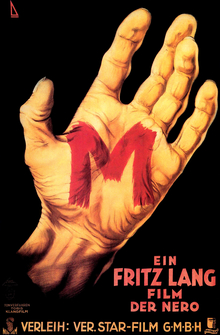
M is a 1931 German mystery suspense thriller film directed by Fritz Lang and starring Peter Lorre as Hans Beckert, a serial killer who targets children. An early example of a procedural drama, the film centers on the manhunt for Lorre's character, conducted by both the police and the criminal underworld.
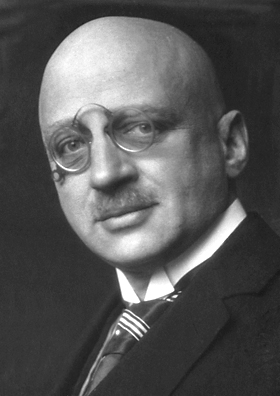
Fritz Haber was a Jewish German chemist who received the Nobel Prize in Chemistry in 1918 for his invention of the Haber–Bosch process, a method used in industry to synthesize ammonia from nitrogen gas and hydrogen gas. This invention is important for the large-scale synthesis of fertilisers and explosives. It is estimated that one-third of annual global food production uses ammonia from the Haber–Bosch process, and that this supports nearly half of the world's population. Haber, along with Max Born, proposed the Born–Haber cycle as a method for evaluating the lattice energy of an ionic solid.

Hampi or Hampe, also referred to as the Group of Monuments at Hampi, is a UNESCO World Heritage Site located in Hampi (City), Ballari district now Vijayanagara district, east-central Karnataka, India. Hampi predates the Vijayanagara Empire; it is mentioned in the Ramayana and the Puranas of Hinduism as Pampa Devi Tirtha Kshetra. Hampi continues as a religious centre, with the Virupaksha Temple, an active Adi Shankara-linked monastery and various monuments belonging to the old city.

Fritz the Cat is a comic strip created by Robert Crumb. Set in a "supercity" of anthropomorphic animals, it focused on Fritz, a tabby cat who frequently went on wild adventures that sometimes involved sexual escapades. Crumb began drawing the character in homemade comic books as a child. Fritz became one of his best-known characters, thanks largely to the motion picture adaptation by Ralph Bakshi.

Obergruppenführer was a paramilitary rank in Nazi Germany that was first created in 1932 as a rank of the Sturmabteilung (SA) and adopted by the Schutzstaffel (SS) one year later. Until April 1942, it was the highest commissioned SS rank after only Reichsführer-SS. Translated as "senior group leader", the rank of Obergruppenführer was senior to Gruppenführer. A similarly named rank of Untergruppenführer existed in the SA from 1929 to 1930 and as a title until 1933. In April 1942, the new rank of SS-Oberst-Gruppenführer was created which was above Obergruppenführer and below Reichsführer-SS.

The Woman in the Window is a 1944 American film noir directed by Fritz Lang and starring Edward G. Robinson, Joan Bennett, Raymond Massey, and Dan Duryea. It tells the story of a psychology professor who meets a young femme fatale and murders her lover in self-defense.
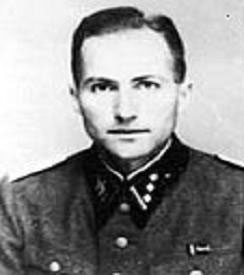
Ludwig Stumpfegger was a German doctor who served in the SS of Nazi Germany during World War II. He was Adolf Hitler's personal surgeon from 1944 to 1945, and was present in the Führerbunker in Berlin in late April 1945.
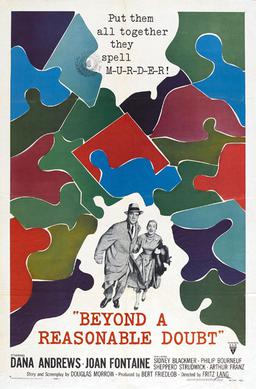
Beyond a Reasonable Doubt is a 1956 American film noir legal drama directed by Fritz Lang and written by Douglas Morrow. The film stars Dana Andrews, Joan Fontaine, Sidney Blackmer, and Arthur Franz. It was Lang's second film for producer Bert E. Friedlob, and the last American film he directed.
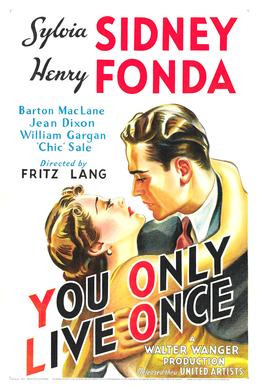
You Only Live Once is a 1937 American crime drama film directed by Fritz Lang and starring Sylvia Sidney and Henry Fonda. Considered an early film noir, the film was the second directed by Lang in the United States. At least 15 minutes were trimmed from the original 100-minute version of the film due to its then unprecedented violence. Despite the removal of such scenes, the film is widely considered an early film noir classic. The film is also known for being one of the first box-office bombs.

The Gothic double is a literary motif which refers to the divided personality of a character. Closely linked to the Doppelgänger, which first appeared in the 1796 novel Siebenkäs by Johann Paul Richter, the double figure emerged in Gothic literature in the late 18th century due to a resurgence of interest in mythology and folklore which explored notions of duality, such as the fetch in Irish folklore which is a double figure of a family member, often signifying an impending death.

Joe May was an Austrian film director and film producer and one of the pioneers of German cinema.

You and Me is a 1938 American crime drama/comedy/romance film directed by Fritz Lang. It stars Sylvia Sidney and George Raft as a pair of ex-convicts on parole, working in a department store whose owner, played by Harry Carey, routinely hires former criminals to give them a second chance. It was written by Norman Krasna and Virginia Van Upp.
Fritz Lang (1890–1976) was an Austrian film director, producer and screenwriter. In Lang's early career he worked primarily as a screenwriter, finishing film scripts in four to five days. Lang directed major German films of the silent and early sound eras including Metropolis (1927) and M (1931) respectively. After fleeing from the Nazi regime, Lang directed some of the most important American crime and film noir motion pictures of the studio era, such as The Big Heat (1953). Lang appeared as himself in Jean-Luc Godard's Contempt.

Gerda Maurus was an Austrian actress.
Gene D. Phillips, S.J. was an American author, educator, and Catholic priest.

The Ufa-Palast am Zoo, located near Berlin Zoological Garden in the New West area of Charlottenburg, was a major Berlin cinema owned by Universum Film AG, or Ufa. Opened in 1919 and enlarged in 1925, it was the largest cinema in Germany until 1929 and was one of the main locations of film premières in the country. The building was destroyed in November 1943 during the Bombing of Berlin in World War II and replaced in 1957 by the Zoo Palast.
Aenne Willkomm, later Aenne Kettelhut, was a German costume designer, born in Shanghai. She worked in German silent films in the 1920s, including as costume designer on Metropolis (1927).